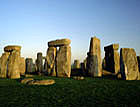Sat nav ignores heritage sites
Sat nav systems ignore heritage sites such as Stonehenge, says Mary Spence


Sat Nav (satellite navigation systems) ignore heritage sites such as Stonehenge, and now Mary Spence, the president of the Royal Cartographic Society has led a protest at its annual conference at the Royal Albert Hall against the loss of place.
Mary Spence argued that sat nav systems and other similar navigational tools 'are demolishing thousands of years of history – not to mention Britain’s remarkable geography – at a stroke by not including them on maps that millions of us now use every day.'
As sat navs were created, says Ms Spence, 'people who weren’t cartographers – computer people – were used to put maps together. If you are driving from A to B, you miss everything that is not directly on your route.'
Ms Spence had used Google Maps to plan her journey to the Royal Albert Hall. 'The National History Museum, the Science Museum, the Victoria and Albert Museum – none of them was on the map.'
Motorists following Google Maps through Wiltshire are instructed to 'exit on to the A303 toward Andover', with no indication of the fact that they are passing Stonehenge.
Map and atlas sales have fallen by 36 per cent since 2004.
Ed Parsons, a geo-spatial technologist from Google, said: 'I think people who are geographically challenged have always been geographically challenged. The big change is that the information is now much more accessible.'
Sign up for the Country Life Newsletter
Exquisite houses, the beauty of Nature, and how to get the most from your life, straight to your inbox.
Mary Spence of the Royal Cartographic Society argued last night, however, that sat nav systems ignore heritage sites such as Stonehenge, and is leading a protest against the loss of place.
To comment on this article, use the comment box below, or email us at clonews@ipcmedia.com. Read more about the countryside.
Country Life is unlike any other magazine: the only glossy weekly on the newsstand and the only magazine that has been guest-edited by HRH The King not once, but twice. It is a celebration of modern rural life and all its diverse joys and pleasures — that was first published in Queen Victoria's Diamond Jubilee year. Our eclectic mixture of witty and informative content — from the most up-to-date property news and commentary and a coveted glimpse inside some of the UK's best houses and gardens, to gardening, the arts and interior design, written by experts in their field — still cannot be found in print or online, anywhere else.
-
 Some of the finest landscapes in the North of England with a 12-bedroom home attached
Some of the finest landscapes in the North of England with a 12-bedroom home attachedUpper House in Derbyshire shows why the Kinder landscape was worth fighting for.
By James Fisher
-
 The Great Gatsby, pugs and the Mitford sisters: Country Life Quiz of the Day, April 16, 2025
The Great Gatsby, pugs and the Mitford sisters: Country Life Quiz of the Day, April 16, 2025Wednesday's quiz tests your knowledge on literature, National Parks and weird body parts.
By Rosie Paterson